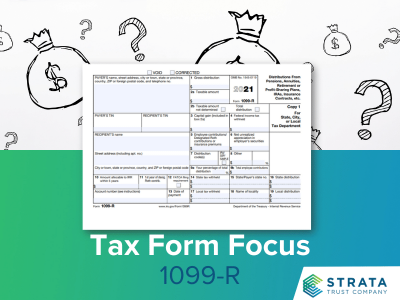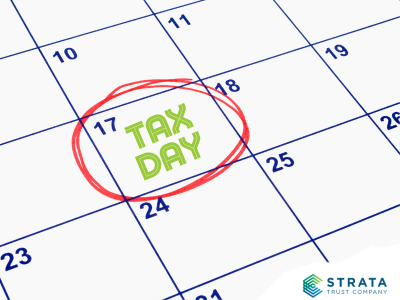Whether you’re saving for retirement or another financial goal, it’s important to consider how the tax benefits available with different types of accounts will help you reach your financial objectives. Depending on whether you want to pay tax on your savings and investment earnings now or later, for example, can determine which type of savings vehicle may best fit your needs.

Meet Sarah
Sarah is 47 years old this year and wants to supplement her retirement savings. With her budget, she plans to save $450 per month ($6,000 per year) over the next 20 years until she retires at age 67. Sarah expects to remain in the 25% income tax bracket until she retires, when she anticipates her tax rate will decrease to 15%. What type of savings vehicle might be best for Sarah?
Taxable
Saving in a bank account or a brokerage account is sometimes referred to as a “taxable” account because you generally must pay tax on investment income earned each year (e.g., mutual fund dividends) inside the account. There are certain tax benefits available to some types of investment growth inside these accounts. For example, the growth in value of stock beyond the initial purchase price won’t be taxable until the asset is sold and may be subject to lower capital gains tax rates. The IRS doesn’t set any restrictions on who can have a taxable account, how much can be saved in the account each year, or when money can be taken out of the account.
Tax-Deferred
Individual Retirement Arrangements (IRAs) are one of several types of retirement savings vehicles that provide tax incentives, like tax-deferred growth, to encourage saving for retirement. In exchange for the tax benefits, IRAs come with certain restrictions, such as how much you can deposit each year ($6,000 for 2021, $7,000 if you’re age 50 or older) and how long you can shelter your savings from tax.
People who want a tax deduction and tax deferral now, and/or who think their tax rate will be lower in retirement, may choose to save in a Traditional IRA. You can defer tax on the compensation you use to fund your Traditional IRA each year if you are eligible for an IRA tax deduction for the year. When you withdraw money from your Traditional IRA, you will have to pay tax on the amount attributable to deductible contributions. Any investment growth inside a Traditional IRA is also tax-deferred until you withdraw those earnings from the IRA.
Tax-Free
A Roth IRA offers different tax benefits than a Traditional IRA. You cannot receive a tax deduction for your contributions to a Roth IRA, so your contributions are made with money that has already been taxed. But you will not owe any tax when you withdraw those contributions from your Roth IRA. Like a Traditional IRA, any investment growth on your contributions is tax-deferred while in the IRA. The big difference with a Roth IRA is that if you meet certain conditions when you take money out of your Roth IRA, any investment growth will be tax-free. Roth IRAs are often chosen by younger individuals with a long time horizon to grow their investments and those who do not need the tax deduction benefit in the year of contribution. Roth IRAs are also helpful in providing a tax-free stream of income in retirement or for heirs after the death of the IRA owner.
The Super Power of Compounding
Another benefit to saving and investing in a tax-advantaged savings vehicle like an IRA is the power of compounding interest. This means that while you’re making regular contributions to grow your savings balance, the investments you choose have the potential to earn interest or grow in value. The interest earned on your account balance today is added to your account and reinvested, so that the interest you earn tomorrow is based on your increased account balance. You’re earning interest on your interest in addition to your contributions! This can add up to a significant amount the longer your contributions and investments have time to grow.

Sarah’s Results
Sarah found when she ran a comparison calculation based on her situation. After 20 years of contributions (assuming a 7% interest rate), each type of account would produce the following account balance when she begins withdrawals at age 67 and the after-tax amount she could expect each month from that account balance for 20 years.
|
|
Taxable Account* |
Tax-Deferred Traditional IRA |
Tax-Free |
|
Account balance at age 67 |
$188,519.89 |
$229,682.11 |
$229,692.11 |
|
After-tax monthly withdrawals until age 87 |
$1,328.27 |
$1,488.52 |
$1,751.20 |
What Does Your Nest Egg Look Like?
Seeking professional tax or financial planning assistance is the best way to ensure all your financial and tax goals are addressed. But to get started, you can compare the benefits of saving in a tax-deferred Traditional IRA, a tax-free Roth IRA, and a taxable account using STRATA Trust’s financial calculators: http://www.stratatrust.com/calculators/
*Lower maximum tax rates on capital gains and dividends would make the investment return for the taxable investment more favorable, thereby reducing the difference in performance between the hypothetical investments shown. Investors should consider their personal investment horizon and income tax bracket, both current and anticipated, when making an investment decision, as these may further impact the comparison.









